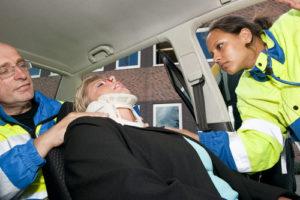
In May 2016, the City of Columbus submitted a final application in a bid to become the U.S. Department of Transportation’s (DOT) first “Smart City.” Columbus was one of seven cities vying for the title.
On June 21, DOT officials named Columbus the winning city. Columbus will receive a $50 million grant from the DOT and Vulcan Inc.
What is a Smart City?
The “Smart City Challenge” was an initiative to get cities thinking about better planning and features to improve pedestrian safety and decrease traffic congestion. Through technology and efficiency improvements, the winning city is expected to serve as a model for other medium-sized cities.
The Smart City will develop a holistic approach to public safety, improved public services, and energy efficiency. Some questions the DOT seeks to answer with the Smart City grant include:
- How will we commute?
- How will we transport things?
- How can we improve transit?
- How will we adapt to changing transit needs and technologies?
Several partners in transportation technology
have stepped up to offer their support. Companies involved in developing transit technology, open data sourcing, and digital security are among the organizations ready to help Columbus make its winning vision a reality.
For a free legal consultation, call (614) 538-1116
What This Means for Columbus
Over the next several years, Columbus streets should begin to see signs of new technology. That could mean the appearance of driverless vehicles on city streets as well as electric vehicle charging stations. Vehicles may even be able to communicate with traffic signals as the Smart City initiatives roll out.
There will be a significant focus on the Linden area for transportation upgrades. The city’s application stated, “Linden has a high proportion of carless households, unreliable access to employment and health services, a lack of access to digital information, and a high portion of cash-based households.”
Linden will be the target market for developing a transit pass system to help those without credit cards, bank accounts, or smartphones continue to use transit systems. These improvements seek to help low-income areas of Columbus where residents have difficulty obtaining transportation to jobs, schools, and heath care.
The Smart City Plan May Improve Health and Safety Across Columbus
Many of the Smart City goals will not only serve to improve the availability of transportation options but also improve public safety. With more driverless cars, experts expect the risk of accidents caused by human error to decrease. Improvements in public transportation may also help reduce pedestrian accidents.
Officials believe another unexpected but celebrated benefit will come in the improvement of public health. With better access to transportation for public health services, there is hope that the infant mortality rate will improve as more mothers seek prenatal and pediatric care.
For the latest news regarding transportation safety in Columbus, visit our blog.
Call or text (614) 538-1116 or complete a Free Case Evaluation form








